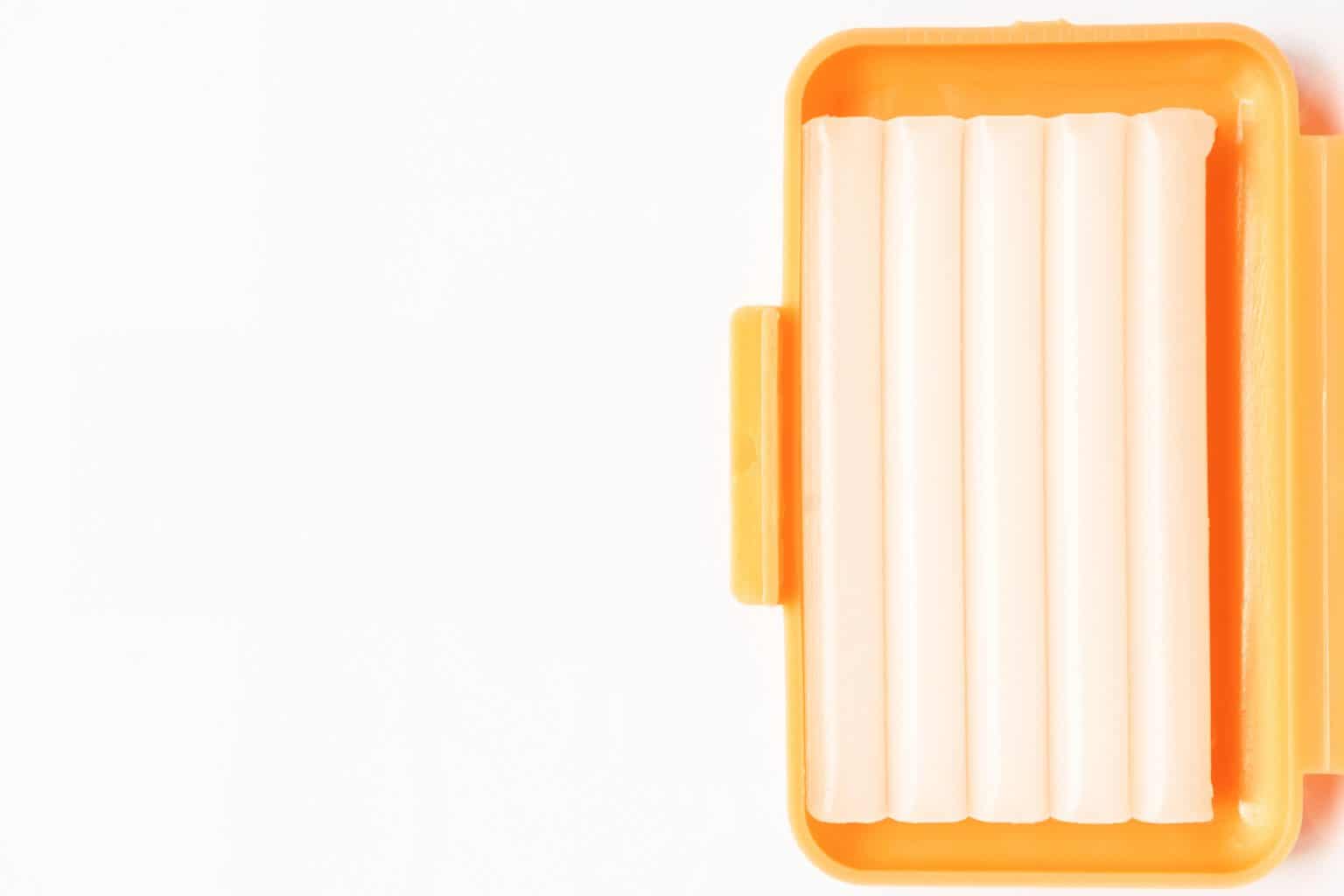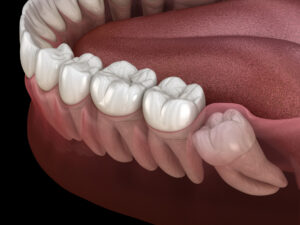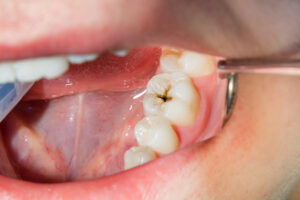Orthodontic tools like braces and dentures are highly effective in correcting structural irregularities of the dental system. But the presence of foreign objects could cause discomfort in the early days. If somehow brackets break or wires protrude at a later stage it can injure soft tissues of the mouth. If you are not able to consult your orthodontist immediately, dental wax or braces wax could be a great temporary relief. In your teeth straightening journey, braces are very important, so dental wax could help you achieve your desired goal with comfort.
What is Dental Wax?
Braces or dental are nothing but natural wax with some additional ingredients for flavor and texture. Although the main ingredient comes from paraffin, beeswax, or carnauba wax, some brands do add more ingredients to make it more effective. It remains solid at room temperature, but the warmth of the hand is enough to make it soft for easy application around the affected area. It is colorless, so it won’t be visible to the onlooker. Depending on your taste preferences, you can opt for flavors of your choice. The special formulation of the braces or dental wax helps in managing irritation and pain caused by brackets and wires of orthodontic devices. If you have a damaged or chipped tooth, you can use it for temporary relief. Wax is natural, so it is perfectly safe for oral use. Even a little ingestion won’t cause any gastronomical problems.
What Is Dental Wax Used For?
The core idea behind the use of dental wax is to reduce friction caused by newly placed braces or broken orthodontic devices. Natural wax, with unique healing properties, is highly effective in protecting the soft tissues of your mouth. The mouth takes time to adjust according to the space required by the orthodontic tools. Some discomfort is inevitable with braces in the early days, but if it is unbearable and affects your attention you should ask your dentist to recommend suitable dental or braces wax.
If braces pop off or a wire comes out of place, all you need to do is apply it around the affected area and it will do its job by giving protective cover. Before applying the dental wax, you should first push protruding wires back to the right position. It will protect the soft tissues of your mouth until you visit your orthodontist.
Dental wax is recommended to reduce the discomfort caused by the metal framework of partial dentures. It is highly effective in giving you temporary relief if your tooth is damaged or chipped. Applying dental wax covers the sharp edges of a chipped tooth so that you could relax till your dentist treats your teeth.
How to Use Dental Wax on Braces?
Braces might cause irritation and pain in the early days. Applying dental wax will help you reduce the discomfort until you visit your orthodontist to make some adjustments. Here is how to apply dental wax on your braces correctly:
- First of all, brush your teeth gently to remove any food particles.
- Use tissue paper or soft cloth to dry the area so that dental wax could stay for longer.
- Keep your hand clean and dry before taking a small piece of wax with your fingers. Roll it into small balls with fingers. Ideally, rolling wax for 3-4 minutes will soften it for smooth application.
- Apply it to the area where the wire or bracket is causing discomfort. Use your finger to press the wax ball so that it could stick properly.
- For a better hold, rub the wax layer a couple of times.
Dental wax is a temporary solution, so visit your dentist at the earliest. In any case, don’t leave the wax for more than 48 hours as it could catch food particles and trigger bacteria to build up. It is better to avoid eating and drinking with wax in your mouth.
What Else to Do Ease Discomfort Caused by Braces?
New braces or braces tightening will naturally cause some discomfort. Usually, pain and discomfort subside in a few days, but meanwhile, you can try these tips for pain relief:
- You can take over-the-counter (OTC) pain relievers. But be careful, if you have any other medical conditions.
- The best is to rinse the mouth using a lukewarm saltwater solution. Use 1 teaspoon of regular salt in 8 ounces of warm water to prepare the solution.
- Avoid eating food items that need much chewing or could get stuck on orthodontic devices
- You can try an ice pack on the affected area to ease irritation
- You can apply topical anesthetics on gums to control pain
- Keep mouth clean
When to See an Orthodontist?
If you are wearing orthodontic devices, you must be visiting your orthodontist at regular intervals for normal checkups and adjustments. Your orthodontist will tell you how to care for tools and what to do if a wire comes loose, bands pop-offs, or brackets break. Your orthodontist will fix it, but meanwhile, you can apply recommended braces wax to protect the soft tissues of your mouth.
If pain and discomfort fail to ease in a few days, you should consult your dentist so that he could examine your tools and make necessary adjustments to make your teeth straightening journey joyful.
Frequently Asked Questions (FAQs) About Braces Wax
Why do I need wax for braces?
Any foreign object, such as traditional metallic braces, is bound to cause friction and irritation in the mouth. Although patients prepare themselves for some discomfort while wearing braces, in some cases it could be unbearable. Just to be on the safer side, orthodontists recommend applying dental wax on braces to protect the soft tissues of your mouth. You will get used to orthodontic devices in a few days, but applying dental wax could make your teeth straightening journey painless.
What are the ingredients of dental wax?
As the name suggests, natural wax is the major ingredient of braces or dental wax. The wax could be bee wax, palm wax, or paraffin wax. Most dental waxes are made transparent to give you much-needed discreteness. Dental wax makers are adding flavor and antiseptic medication to make it user-friendly and effective.
Is it safe to eat with dental wax?
Natural wax is perfectly safe to use in the mouth. So, even if you accidentally ingest some dental wax, it won’t cause discomfort. It is edible, but it is not recommended to eat hot food and drink with dental wax in the mouth. If food particles get stuck on wax, it could cause a foul smell and taste terrible. It is advisable to apply wax after eating and brushing to avoid any chances of infection.
Can I drink water with my dental wax on?
You can drink water as swallowing dental wax is harmless. But, drinking water or beverages could loosen the wax layer, thus making it less effective. You know how to drink water without touching braces wax.
Can I leave the dental wax on overnight?
Most braces wearers use dental wax to ease rubbing-induced irritation. So, you can apply dental wax on braces after your dinner and sleep with it as natural wax is edible. Maximum friction happens when you move your oral muscles, so you can avoid applying dental wax if it affects your sleep.
Will the dental wax be visible to onlookers?
Natural wax is almost transparent and manufacturers are making it extra transparent to help you use it without the concern of visibility. Your onlookers will not notice dental wax on your braces until it is stained with food particles.
Does dental wax taste bad?
Bee or palm wax used in making dental wax is tasteless in its natural form. But if you don’t like it, you can opt for flavors of your choice. There is nothing wrong with making your protective dental wax more joyful to taste buds.
How many times dental wax could be applied on braces?
It is perfectly safe to use dental wax, so you can use it as many times as you need to keep your orthodontic journey comfortable. Most of the patients prefer using it in the early days and when the orthodontist makes adjustments. If your wires and brackets are causing irritation, you can keep on using them to protect the soft tissues of your mouth.
How do I remove dental wax?
Dental wax is soft, so it peels off on its own. If the need arises, you can remove it using your fingers and some toothpick. If it is stuck in between braces and teeth, you can use dental floss to remove it without affecting the braces.
Where can I buy orthodontic wax?
Dental wax is easily available in pharmacies and online stores. It is better to consult your orthodontist and ask for suitable orthodontic or braces wax. He will prescribe something that suits your needs.
Summary
Moving teeth is a complex biomechanical process, so your orthodontic devices such as braces will naturally cause some discomfort. But if the discomfort is unbearable and recurs frequently, you should consult your orthodontist as discomfort could be due to fitting issues. Besides discomfort, wear and tear of orthodontic devices are normal so if your device breaks and hurts the soft tissues of your mouth you can use dental wax to protect your oral space. You can keep some OTC painkillers and dental wax in your oral care box to make your teeth straightening journey painless.
Sources:
- Kotsiomiti, E., & McCabe, J. F. (1997). Experimental wax mixtures for dental use.
https://onlinelibrary.wiley.com/doi/abs/10.1111/j.1365-2842.1997.tb00367.x - Van Wijk, A. J., & Hoogstraten, J. (2005). Experience with dental pain and fear of dental pain.
https://journals.sagepub.com/doi/abs/10.1177/154405910508401014 - Kluemper, G. T., Hiser, D. G., Rayens, M. K., & Jay, M. J. (2002). Efficacy of a wax containing benzocaine in the relief of oral mucosal pain caused by orthodontic appliances.
https://www.sciencedirect.com/science/article/pii/S0889540602000860 - Kavaliauskiene, A., Smailiene, D., Buskiene, I., & Keriene, D. (2012). Pain and discomfort perception among patients undergoing orthodontic treatment: results from one month follow-up study.
https://elibrary.ru/item.asp?id=30959499



